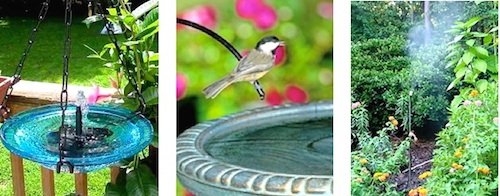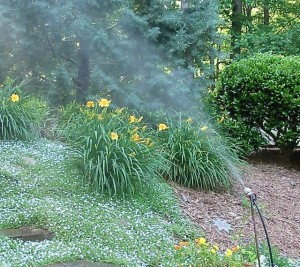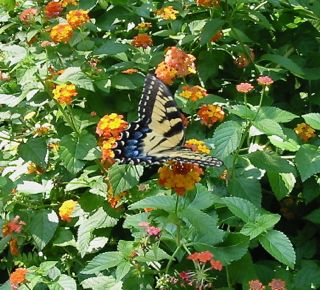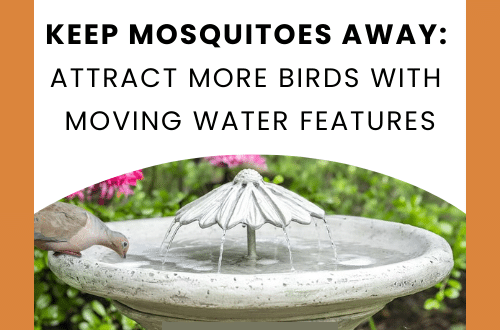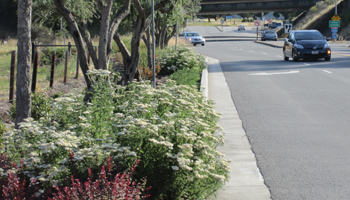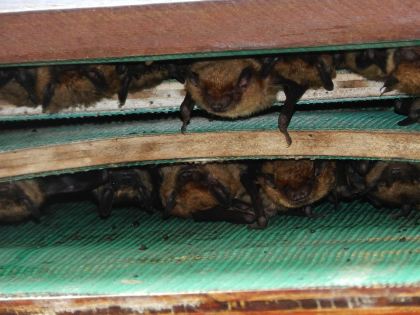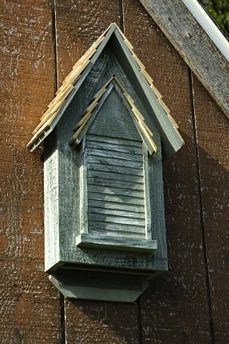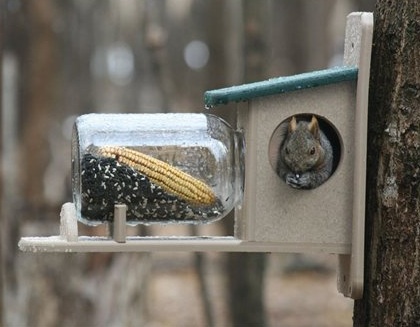-
Water Features and Solar Bird Baths for All Friendly Fliers
In the heat of summer there’s no better way to entice friendly fliers than with moving water!
Accessories for bird baths and leaf misters will absolutely bring more birds (and butterflies) to the garden. Because
they keep water from becoming stagnant, it stays fresher and mosquitoes can’t lay their eggs in it either.
Both solar fountains and those using electricity recirculate water in bird baths. Drippers and leaf misters run off the outdoor spigot and although very slow and adjustable, do utilize a continuous water flow. They come as complete kits with everything required to be up & running in minutes… no kidding!
Leaf misters offer lots of options for placement too. You can attach them to a branch or trellis, (50 ft. of rubber tubing is included) attach to a deck bracket or even a simple plant stake in the garden. We prefer the latter as the mister may easily be moved around to benefit the garden by watering different sections daily.
Butterflies especially adore the gentle mist, while hummingbirds and other songbirds like chickadees and bluebirds will wait for them to start each morning… it’s like a spa for them and makes a spectacular viewing experience for host too.
Place leaf misters near nectar-producing plants like lantana and enjoy the show!
Moving water in a bird bath or somewhere in the landscape is the ticket to seeing more bird activity during warm summer months. In fall, simply pack them up and store away for next season. A one-time investment that promises to bring many seasons of use and enjoyment… and more winged activity to your place!
-
Of Bees and Bat Houses and the Pollinator Partnership
To jump-start National Pollinator Week (okay, so we’re on the very last day-last hour of it) the Pollinator Partnership (P2) introduced The Highways BEE Act. Because bees, butterflies, birds and bats bring us one in every three bites of food, pollinators form the essential underpinnings of a healthy and sustainable future… for all of us.
Over 250 national, regional, and local organizations and 2,500 American scientists and individuals from all walks of life across the nation have already signed a petition in support of the Highways BEE Act, H.R. 2738.
Such legislation is designed to help cash-strapped states reduce roadside maintenance costs, while providing habitat for crucial pollinators. After all, without bats we might not have bananas or tequila! Almost exclusively, bats pollinate the agave plant which is where tequila is born! But in all seriousness, interested organizations, businesses and individuals can find out more and sign a petition in support of the legislation at http://www.pollinator.org/BEEAct.htm.
Providing habitat closer to home could include nixing the use of pesticides and manicured lawns, planting predominately native in the landscape, and the addition of bat houses on your property. If you already see the furry mammals (yes, they’re really mammals) fluttering around at dusk, chance are excellent they’ll take up residence in the new digs.
Like NABS (North American Bluebird Society) for approved bluebird houses and PMCA for purple martin houses, bat houses have OBC (The Organization for Bat Conservation). A wealth of knowledge for any questions bat-related, it’s a good idea to look for the OBC seal of approval when purchasing a new home for the furry friends.
Whether testing the waters with a smaller design, or full-on ready to host larger colonies, bat houses are available from single- to triple-chamber sizes. Although they may be post mounted (minimum 12- 15 feet high), most sources recommend mounting them on a structure or tree. Bats don’t require the open spaces that many birds prefer. They like to be close to things, which is why they sometimes end up in your attic!
With a growing public awareness for the plight of, and broader knowledge of the critical role pollinators play for crops and for the future, there’s a strong collective popularity developing. From manufacturing and marketing of bee keeping and bug hotels to thriving master gardener groups, bat houses have also kept right in stride. You’ll find them in traditional cedar, cypress, recycled plastics and vinyl/PVC. They’re good-looking enough to actually mount on the side of your home as a decorative accessory! So please house the bats and sign the petition mentioned above… for all of us and for future generations 🙂
-
Novel Options for Squirrel Feeders
You may think it’s the absolute craziest thing in the world, but plenty of folks get a kick from feeding squirrels. If you baffle the bird feeders properly, and the furry critters don’t tell too many of their friends… it’s usually cool!
Traditional squirrel feeders like the big jar, munch box, and table & chair have been updated using durable recycled plastic. Also called poly-lumber, the material is good looking and wares much nicer and longer than wood.
But a jar is a jar and it’s glass. Because glass may break for whatever reason, replacement jars are available. But something we’ve discovered: Pickles! The industrial size pickle jar usually fits these feeders! And for considerably less money when shipping is figured into the price. Plus you get a whole lot of pickles… fried pickles anyone?
Using corn cobs with your squirrel feeder? Check out the Squirrel Logs for long-lasting use. A novel idea, these are compressed corn (in two flavors) that equal about 12 ears of regular corn cobs. Something else we’ve discovered? Be sure the logs are securely attached to the feeding pin as our crafty critters have managed to steal them from time-to-time! They just require twisting up on the pin every few days to keep a tight connection.
These work well with the Bungee Cord Feeder and the Table & Chair. The pins (or screws) on the feeder must be threaded… or your crafty critters will steal them too!
Want to offer a combination of corn cobs and peanuts or munch mix for your guys? The Ultimate Combo Feeder fits the bill. Pins for two ears of corn plus a lift-up compartment for special treats. Lucky squirrels will think they’re at the Ritz!
Change it up for furry friends. During frigid winter weather peanut butter is a huge hit when smeared on corn cobs, but summer days in the south turn the gooey stuff to liquid in minutes. Substitute an apple or pear that might be a bit too ripe for your liking. Suet? Squirrels adore it and the no-melt varieties are perfect for summer feeding.
Yes squirrels can be a major pain for some folks, but they manage to bring smiles and laughs to others. Once you get the hang of keeping them out of bird feeders, they really aren’t so bad 🙂

